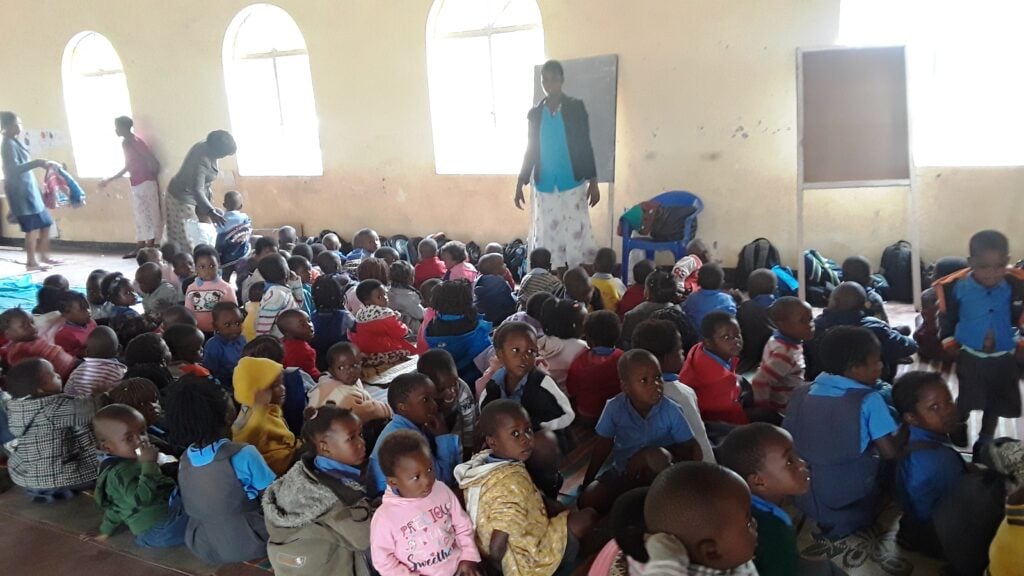Hey there! Have you ever wondered what it takes to create sustainable change in a community? How can we empower communities to thrive and create a positive impact? Well, you’ve come to the right place! In this article, we’ll explore the fascinating world of community development and how it can empower communities to drive long-term change.
Community development is a dynamic process that involves engaging and mobilizing community members, organizations, and stakeholders to work together towards common goals. It goes beyond mere intervention and seeks to empower communities to take charge of their own development.
Through this article, we’ll dive deep into the various aspects of community development, from understanding its definition to identifying community needs and building collaborative partnerships. We’ll also explore the crucial role of community engagement and participation, as well as the importance of monitoring and evaluation for effective project implementation.
So, whether you’re interested in community work, want to make a difference in your own neighborhood, or simply curious about how communities can bring about sustainable change, this article will provide you with valuable insights and practical tips to get started. Let’s begin this exciting journey of empowering communities together!

Understanding Community Development
Community development is a process that empowers individuals and groups to create sustainable change within their communities. It is about fostering collaboration, building strong relationships, and addressing the unique needs of a community. By understanding the key principles and importance of community empowerment, we can create lasting impact and work towards a brighter future for all.
Defining Community Development
Community development is a holistic approach to improving the social, economic, and environmental well-being of a community. It involves empowering individuals to take an active role in shaping their own future and creating positive change. It goes beyond traditional top-down approaches by recognizing the valuable contributions that community members can make.
Importance of Community Empowerment
Community empowerment lies at the heart of community development. When individuals feel a sense of ownership and control over their own lives and the decisions that affect them, they are more likely to become engaged and motivated. Empowered communities are better equipped to tackle challenges, advocate for their needs, and work towards sustainable solutions.
Key Principles of Sustainable Change
To create sustainable change, community development is guided by several key principles:
- Inclusivity: All community members should have the opportunity to participate and have their voices heard. Inclusive decision-making processes ensure that diverse perspectives and needs are taken into account.
- Partnerships: Collaboration with local stakeholders, government institutions, NGOs, and businesses is crucial for successful community development. By working together, resources can be pooled, expertise can be shared, and a collective vision can be realized.
- Capacity Building: Building the skills, knowledge, and capabilities of individuals and communities is essential for sustained change. Offering training, mentoring, and educational opportunities empowers community members to lead their own development initiatives.
- Sustainability: Community development projects should be designed with long-term sustainability in mind. This means considering the environmental impact, economic viability, and social implications of initiatives. Projects should be adaptable and resilient to changing circumstances.
- Equity: Recognizing and addressing social injustice and inequality is crucial for creating sustainable change. Community development should strive to provide equal access to resources, opportunities, and services for all community members.
By embracing these principles and understanding the essence of community development, we can lay the foundation for meaningful and lasting transformation.

Identifying Community Needs
When it comes to community development, it’s crucial to understand the needs of the community you want to empower. By identifying these needs, you can design and implement projects that will have a meaningful and lasting impact on the community. Here are some key steps to help you in identifying community needs:
-
- Conducting a Community Needs Assessment – This involves gathering information about the community’s current state, challenges, and aspirations. Conducting surveys, interviews, and focus groups can help you collect valuable insights from community members.
“A needs assessment provides an opportunity for community members to voice their concerns and priorities. It allows for a comprehensive understanding of the community’s strengths, weaknesses, and areas for improvement.”
-
- Analyzing Social, Economic, and Environmental Factors – It’s important to consider the various factors that influence a community’s well-being. This includes analyzing social dynamics such as education, healthcare, and social cohesion, as well as economic factors like employment opportunities and income levels. Additionally, taking into account environmental factors such as access to clean water, sanitation, and sustainable resources is crucial for long-term development.
“By analyzing social, economic, and environmental factors, you can gain a deeper understanding of the root causes of the community’s challenges. This analysis forms the foundation for effective project planning and implementation.”
-
- Engaging Community Members – Community participation is key to ensuring that the needs assessment accurately reflects the community’s voice. Engage community members through community meetings, workshops, and focus groups. Encourage them to actively participate and share their perspectives, experiences, and aspirations.
“Remember, community members are the experts of their own lives. Their input is essential in shaping the direction of community development initiatives.”
By following these steps, you can gain a comprehensive understanding of the needs and aspirations of the community you aim to empower. This understanding sets the stage for effective planning and implementation of projects that address the community’s most pressing issues.
Building Collaborative Partnerships
Building collaborative partnerships is a crucial aspect of community development. By establishing relationships with local stakeholders, engaging government institutions and NGOs, and developing partnerships with businesses, we can create a powerful network that supports the growth and sustainability of our communities.
Establishing Relationships with Local Stakeholders
Building strong relationships with local stakeholders is essential in community development. These stakeholders can include community leaders, residents, and organizations that are directly impacted by the projects and initiatives being implemented. By involving them in decision-making processes and listening to their perspectives, we can ensure that our efforts are aligned with the needs and aspirations of the community.
Engaging Government Institutions and NGOs
Government institutions and non-governmental organizations (NGOs) play a key role in community development. Collaborating with these entities allows us to tap into their expertise, resources, and networks. Governments provide crucial support in terms of policies, permits, and funding, while NGOs often bring specialized knowledge and experience to the table. By working together, we can mobilize a wider range of resources and implement more impactful projects.
Developing Partnerships with Businesses
Involving businesses in community development efforts can bring significant benefits. Companies can contribute financial resources, expertise, and skills that can help drive positive change. Moreover, partnerships with businesses can lead to job creation, economic growth, and enhanced social well-being in the community. By aligning the goals and interests of businesses with community development objectives, we can create mutually beneficial partnerships that have a lasting impact.
Building collaborative partnerships involves fostering trust, open communication, and shared objectives. It is important to find common ground and establish a sense of shared responsibility among all stakeholders involved. Here are a few key strategies for effectively building collaborative partnerships:
- Identify common goals: Clearly identify the shared goals and visions of all stakeholders involved. This will help create a sense of unity and purpose in working towards sustainable change.
- Establish clear roles and responsibilities: Define the specific roles and responsibilities of each stakeholder in the partnership. Clarity on expectations and accountabilities will help streamline efforts and avoid misunderstandings.
- Regular communication: Maintain open lines of communication among all stakeholders. Regular meetings, progress updates, and feedback sessions are vital for effective collaboration and problem-solving.
- Celebrate achievements: Recognize and celebrate the achievements and milestones of the partnership. This not only boosts morale but also reinforces the importance of collaboration and the positive impact it can have.
By building collaborative partnerships, we can leverage the strengths of each stakeholder involved and create a supportive ecosystem that drives sustainable change. Together, we can make a real difference in empowering our communities.
Planning and Implementing Projects
When it comes to community development, planning and implementing projects is a crucial step in creating sustainable change. This is where the vision for the community’s future becomes a reality. By carefully strategizing and executing projects, we can address the specific needs and challenges of the community. Here’s a breakdown of how to effectively plan and implement projects for community development:
Setting Goals and Objectives
Before starting any project, it’s important to define clear goals and objectives. These serve as the guiding principles and help determine the project’s direction. Goals are the broad outcomes you want to achieve, while objectives are the specific steps that will lead you to those outcomes. By setting SMART goals (Specific, Measurable, Achievable, Relevant, Time-bound) and well-defined objectives, you can ensure that your project is focused and achievable.
Creating Sustainable Project Plans
A sustainable project plan takes into account the long-term impact and viability of the project. It considers the social, environmental, and economic aspects to create lasting change. Here are some key elements to include in your project plan:
- Project Scope: Clearly define the scope of your project, including the specific activities, timeline, and resources required.
- Budget and Resource Allocation: Identify the financial and human resources needed for the project and allocate them effectively.
- Risk Assessment and Mitigation: Identify potential risks and develop strategies to mitigate them. This ensures the smooth implementation of the project and minimizes any negative impact.
- Stakeholder Engagement: Involve key stakeholders at every stage of the project, from planning to implementation. Their input and support are essential for the success of the project.
- Monitoring and Evaluation: Develop a plan to monitor and evaluate the progress and effectiveness of the project. This allows for adjustments and improvements as needed.

Mobilizing Resources
To bring your project to life, you’ll need to mobilize the necessary resources. This includes financial resources, materials, and human resources. Here are some strategies for mobilizing resources:
- Partnerships: Collaborate with local businesses, government institutions, NGOs, and other organizations to leverage their resources and expertise.
- Fundraising: Organize fundraising events, seek grants and donations, and explore crowdfunding platforms to gather financial support for your project.
- In-kind Donations: Approach companies and individuals to request in-kind donations of materials, equipment, or services that can contribute to your project.
- Volunteers: Recruit and train volunteers who are passionate about your cause and can provide valuable support in implementing the project.
- Community Contributions: Encourage community members to contribute their skills, time, or resources to the project. This fosters a sense of ownership and pride within the community.
By effectively planning and implementing projects, we can bring about tangible improvements and create lasting change within communities. However, it’s important to remember that community development is an ongoing process. Constant evaluation, adaptation, and collaboration with community members are essential for sustainable impact. So let’s roll up our sleeves and work together to build stronger, thriving communities!
“Planning and implementing projects is like turning dreams into reality. By setting clear goals, creating sustainable plans, and mobilizing resources, we can make a tangible difference in our communities.”
Community Engagement and Participation
Community engagement and participation are essential aspects of community development. When community members are actively involved in the decision-making process and take ownership of the projects, the chances of creating sustainable and impactful change significantly increase. Engaging and empowering community members not only fosters a sense of belonging and pride but also builds trust and cooperation among individuals and groups within the community. Here are some key points to consider when it comes to community engagement and participation:
Promoting Community Involvement
- Create a welcoming and inclusive environment: Foster an atmosphere where everyone feels comfortable and encouraged to participate. Respect diverse opinions, cultures, and perspectives within the community.
- Keep communication channels open: Establish effective communication channels to continuously inform and involve community members in project-related updates, meetings, and decision-making processes.
- Encourage active participation in meetings and discussions: Provide opportunities for community members to voice their opinions and actively participate in shaping the development projects. Facilitate meaningful conversations and ensure everyone’s voice is heard.
- Utilize technology and social media: Leverage technology and social media platforms to reach a broader audience and engage with community members. Set up online forums or groups where people can share ideas, ask questions, and provide feedback.
Fostering Leadership and Capacity Building
- Identify and nurture local leaders: Identify individuals within the community who exhibit leadership qualities and involve them in the planning and decision-making processes. Empower them to become advocates for change and ambassadors of community development.
- Provide training and capacity-building opportunities: Offer workshops, training programs, and mentorship opportunities to enhance the skills, knowledge, and capabilities of community members. This empowers individuals to take on leadership roles and actively contribute to the development projects.
- Encourage intergenerational collaboration: Recognize the importance of involving people from different age groups in community development initiatives. Encourage intergenerational collaboration, where young people can learn from the wisdom and experiences of older community members, and vice versa.
Encouraging Active Participation
- Tailor engagement approaches to different groups: Recognize that different individuals and groups may have varying levels of interest, knowledge, and availability to participate. Use different strategies and methods to engage diverse groups and ensure their active involvement.
- Involve marginalized groups: Proactively include marginalized groups, such as women, ethnic minorities, and people with disabilities, in the decision-making and planning processes. Ensure their voices and needs are given proper consideration.
- Recognize and appreciate contributions: Acknowledge and appreciate the efforts and contributions of community members who actively participate. Celebrate milestones and successes together as a community to foster a culture of pride and motivation.
- Create opportunities for skill utilization: Involve community members in tasks that align with their skills and interests. This not only enhances their sense of ownership but also ensures that their talents are utilized effectively for the betterment of the community.

Engaging and involving community members is crucial for the success of community development projects. By promoting community involvement, fostering leadership and capacity building, and encouraging active participation, we can create a sense of ownership and shared responsibility that leads to long-lasting and sustainable change.
“When community members are actively engaged and take ownership of projects, the impact is far greater. Their involvement not only leads to better decision-making but also fosters a stronger sense of community and cooperation.”
Monitoring and Evaluation
When it comes to community development, monitoring and evaluation play a crucial role in ensuring that projects are effective, impactful, and sustainable. Monitoring and evaluation allow organizations and communities to track progress, measure outcomes, and make informed decisions for continuous improvement. So, let’s dive deeper into this important aspect of community development.
Developing Monitoring and Evaluation Systems
Before we can start monitoring and evaluating our community development projects, we need to establish clear systems and frameworks. This involves:
- Defining indicators: Identifying key performance indicators (KPIs) that will help us measure progress towards our goals. These indicators should be specific, measurable, achievable, relevant, and time-bound (SMART).
- Establishing data collection methods: Determining how we will collect data to assess the impact of our projects. This can include surveys, interviews, focus groups, observations, and document reviews.
- Setting up monitoring and evaluation tools: Utilizing technology, such as data management systems and software, to streamline the monitoring and evaluation process.
Measuring Impact and Effectiveness
Once we have established our monitoring and evaluation systems, we can begin measuring the impact and effectiveness of our community development projects. This involves:
- Collecting data: Gathering data on various indicators to assess the progress and outcomes of our projects. This can include data on economic growth, social well-being, environmental sustainability, and community empowerment.
- Analyzing data: Examining the collected data to identify trends, patterns, and gaps. This analysis helps us understand the strengths and weaknesses of our projects and make data-driven decisions for improvement.
- Evaluating outcomes: Assessing the outcomes of our projects against the set goals and objectives. This evaluation helps us determine whether our projects have achieved their intended impact and whether any adjustments are needed.
Adapting Strategies for Continuous Improvement
Monitoring and evaluation provide us with valuable insights that allow us to adapt our strategies for continuous improvement. This involves:
- Identifying lessons learned: Reflecting on the successes and challenges encountered during the implementation of our projects. These lessons help us identify best practices and areas for improvement.
- Making adjustments: Based on the findings from our monitoring and evaluation efforts, we can make necessary adjustments to our project plans, activities, and approaches. This ensures that we are responsive to the needs and aspirations of the community.
- Sharing results and knowledge: Communicating the results of our monitoring and evaluation efforts with the community, stakeholders, and other organizations. This sharing of knowledge promotes transparency, accountability, and collective learning.
By continuously monitoring and evaluating our community development projects, we can ensure that we are on the right track and making a real difference in the lives of the community members. It allows us to identify what works, what needs improvement, and how we can maximize our impact.
Remember, monitoring and evaluation are not just about numbers and statistics. They are about understanding the stories, experiences, and aspirations of the community. They help us listen to the voices of the community and make meaningful changes that empower and uplift them.
“Monitoring and evaluation are like compasses that guide us in our journey towards sustainable community development.”
Sustaining Change and Long-term Impact
Creating sustainable change in communities requires a long-term approach. It’s not enough to simply implement projects and programs; we need to ensure that the change we bring about is lasting and continues to make a positive impact in the community. Here are some key strategies for sustaining change and achieving long-term impact:
Developing Sustainability Strategies
- Sustainability should be at the forefront of community development efforts. It involves creating strategies and plans that ensure the longevity of projects and initiatives.
- Sustainability strategies focus on building the capacity of the community to maintain and continue the progress achieved. This may involve training community members, developing local leadership, and promoting self-reliance.
- It is essential to involve the community in the development of sustainability strategies. Their perspectives and aspirations should shape the plans, ensuring that they feel ownership and responsibility for maintaining the change.
- Developing alternative funding sources is also crucial for sustaining change. Relying solely on external funding may not be sustainable in the long run. Encouraging entrepreneurship and fostering economic opportunities within the community can help generate income for ongoing projects.
Promoting Local Ownership
- One of the keys to sustaining change is promoting local ownership. When communities feel a sense of ownership over the projects and initiatives, they are more likely to take responsibility for their success and continuation.
- Ownership can be fostered through involving community members in decision-making processes, encouraging their active participation, and empowering them to take leadership roles. This helps create a sense of pride and ownership in the community’s development.
- Transferring knowledge and skills to community members is also an important part of promoting local ownership. By equipping individuals with the necessary skills and expertise, they can continue the work independently even after external support wanes.
Ensuring Continued Support
- To sustain change, it is important to provide continued support to communities, even after initial projects or programs have been implemented. This can be done through ongoing mentorship, capacity-building workshops, and technical assistance.
- Monitoring and evaluation plays a crucial role in ensuring continued support. Regularly assessing the progress and impact of projects allows for necessary adjustments and improvements to be made along the way.
- Building partnerships and collaborations with other organizations and institutions can also help ensure continued support. By working together, resources can be shared, and expertise can be leveraged to maximize impact.
Sustaining change requires a multi-faceted approach that goes beyond short-term fixes. It involves building the capacity of communities, promoting local ownership, and providing continued support. By following these strategies, we can empower communities and help them achieve long-term, sustainable change.
Remember, sustainability is not a destination; it’s a journey. It requires ongoing commitment, collaboration, and adaptation. Together, we can build thriving, resilient communities that make a lasting impact.
Empowering Marginalized Communities
Addressing Social Injustice and Inequality
In order to create sustainable change in marginalized communities, we must first address the social injustice and inequality that these communities face. By acknowledging and confronting the systemic issues that contribute to marginalization, we can work towards creating a level playing field for all individuals. This involves:
- Advocacy: Advocating for policy changes and social reforms that promote equality and justice. This can include lobbying for antidiscrimination laws, advocating for fair housing policies, and supporting initiatives that prioritize the needs of marginalized groups.
- Education and Awareness: Raising awareness about the issues faced by marginalized communities and educating others about the importance of equality and diversity. This can be done through community workshops, awareness campaigns, and educational programs.
- Community Support: Providing resources and support networks for individuals and families in marginalized communities. This can include access to healthcare, education, employment opportunities, and social services.
Providing Equal Access to Opportunities
Equal access to opportunities is crucial for empowering marginalized communities and breaking the cycle of poverty and exclusion. By ensuring that everyone has access to the same opportunities for education, employment, healthcare, and social services, we can level the playing field and provide individuals with the tools they need to thrive. This can be achieved through:
- Equal Education: Ensuring that schools in marginalized communities have the necessary resources and support to provide quality education for all students. This can include improving school infrastructure, providing teacher training, and offering scholarship programs for disadvantaged students.
- Job Training and Employment Programs: Creating job training and employment programs specifically targeted towards marginalized communities. These programs can help individuals develop the necessary skills and qualifications for employment, as well as provide job placement assistance and support.
- Access to Healthcare: Ensuring that marginalized communities have access to affordable and quality healthcare services. This can be achieved through the establishment of community health clinics, mobile health units, and partnerships with healthcare providers.
Empowering Vulnerable Groups
Empowering vulnerable groups within marginalized communities is essential for creating sustainable change. By addressing the unique needs and challenges faced by these groups, we can promote inclusivity and ensure that no one is left behind. Some ways to empower vulnerable groups include:
- Women’s Empowerment: Promoting gender equality and empowering women in marginalized communities. This can involve providing access to educational opportunities, supporting women’s entrepreneurship, and addressing issues such as domestic violence and gender-based discrimination.
- Youth Empowerment: Investing in the education and development of youth in marginalized communities. This can include mentorship programs, leadership training, and extracurricular activities that promote personal growth and empowerment.
- Elderly Support: Providing support and resources for the elderly in marginalized communities. This can include access to healthcare services, social activities, and programs that address the specific needs of elderly individuals.
By addressing social injustice and inequality, providing equal access to opportunities, and empowering vulnerable groups, we can create sustainable change and uplift marginalized communities. It is through these efforts that we can build a more inclusive and equitable society for all.
Conclusion
Conclusion
In conclusion, community development is a powerful tool for creating sustainable change and empowering local communities. By understanding the needs of the community, building collaborative partnerships, and engaging community members, we can plan and implement projects that address these needs effectively. Through community engagement and participation, we can foster leadership, build capacity, and encourage active involvement.
Monitoring and evaluation allow us to measure the impact and effectiveness of our projects and make necessary adaptations for continuous improvement. Sustaining change and ensuring long-term impact require developing sustainability strategies, promoting local ownership, and providing continued support. It is also crucial to address social injustice and inequality, provide equal access to opportunities, and empower vulnerable groups.
At A Broader View Volunteers, we are dedicated to empowering communities and creating sustainable change. Through our international volunteer programs, we provide meaningful experiences for volunteers while making a positive impact on local communities. By combining cultural exchange, community development, and sustainable projects, we aim to empower individuals and communities to create a brighter future.
If you are passionate about making a difference and want to be part of our mission, visit our website at www.abroaderview.org to learn more about our volunteer opportunities. Together, we can create lasting change and make a positive impact on communities around the world. Join us today and be a part of something greater!
Frequently Asked Questions
- What is community development?Community development is a process that empowers individuals and groups within a community to work together to identify and address their common needs and goals. It involves promoting social justice, improving quality of life, and creating sustainable change.
- Why is community development important?Community development is important because it fosters active participation, local decision-making, and ownership among community members. It strengthens social bonds, enhances community resilience, and creates a sense of belonging and empowerment.
- What are the key principles of community development?The key principles of community development include inclusivity, participation, empowerment, collaboration, and sustainability. These principles ensure that community members have a voice, agency, and access to resources and opportunities for growth.
- What are some common community development initiatives?Common community development initiatives include affordable housing projects, youth programs, education and skill-building initiatives, environmental sustainability projects, healthcare access programs, and cultural and arts programs.
- How can individuals get involved in community development?Individuals can get involved in community development by volunteering their time and skills, participating in community organizations and groups, attending town hall meetings, supporting local businesses, and advocating for social and economic justice.



